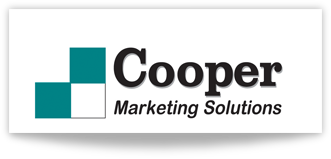In my last post, I discussed the long-term value of whitepapers in any content marketing strategy. Whitepapers are commonly used to support lead-generation campaigns given that prospects will often provide information in exchange for good content. Many organizations also leave whitepapers on their websites indefinitely, often behind a form that visitors must fill out to access them.
Whitepapers aren’t the only form of gated content — I’ve seen organizations put case studies and even brochures and data sheets behind a form. However, it’s most typical to use gated content in the “consideration” stage of the content marketing funnel. At this stage, the prospect is aware of the business problem that your product or service solves and is interested in that solution. The prospect wants more in-depth information, such as a whitepaper, eBook or report, to determine if your product or service is worth purchasing.
All too often, however, prospects get to that form and the process grinds to a halt. They know they’re going to get an email or a phone call within minutes after the content download. If they’re still considering your product or service, they’re probably not ready to engage with a sales person. That phone call or email will be premature, so the prospect may decide not to download the whitepaper or may provide false information.
That’s a shame because high-quality content is a powerful force in B2B marketing. Studies have shown that buyers consume an average of nine content assets during the six stages of the purchasing process. In the 2018 Content Preferences Survey from Demand Gen, however, 66 percent of B2B buyers said they strongly agree that content should be easier to access.
The survey also found that B2B buyers are becoming more selective in the content they choose to consume. Eighty-eight percent said that content should focus more on business value than on the specifics of the organization’s product or service.
These findings echo the 2016 Content Preferences Survey. B2B buyers said that they want trustworthy content that provides industry insight and analysis rather than a sales pitch. In addition, 94 percent said that they don’t want to have to fill out long forms in order to access the content.
(By the way, 82 percent of buyers said they used whitepapers to make purchasing decisions. Despite a professed desire for shorter content, prospects used whitepapers more than any other resource.)
If you decide to put content behind a form:
- Be sure it’s high-quality, valuable content that will show the prospect you’re an authoritative, trustworthy source.
- Make the lead-gen form as short as possible — don’t ask for information you have or can capture easily.
- Consider offering ungated content alongside the gated resource so the prospect can get a flavor of what you have to offer.
The gated content debate has been going on as long as there have been web forms. Marketers gate content because it allows them to capture valuable information on their prospects. Just make sure you’re not disrupting the purchasing process by putting up barriers that drive your prospects away.
Contact Us
Phone: 866.908.2131
Email: info@coopermktg.com
Address:
10205 E. 61st St. Ste. D-1
Tulsa, OK 74133
